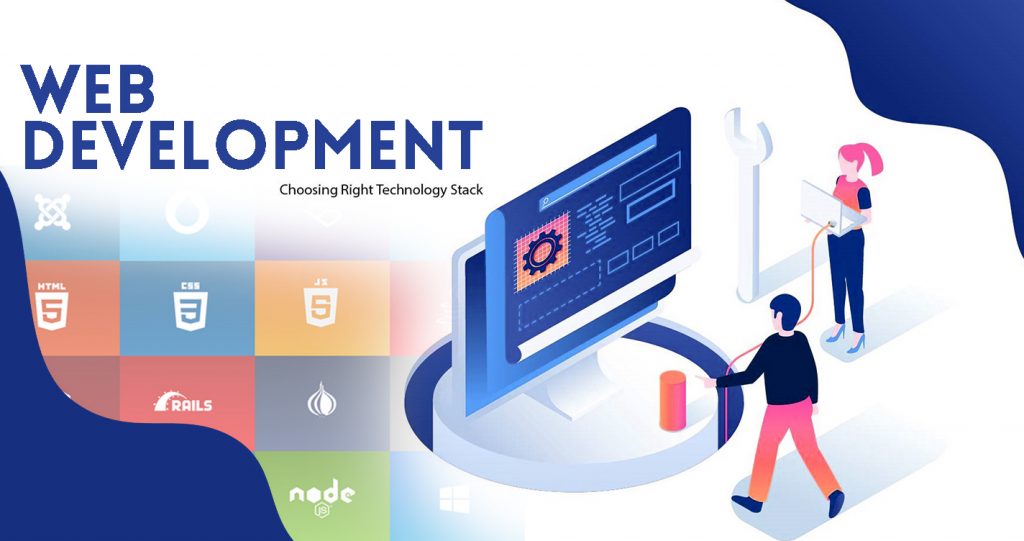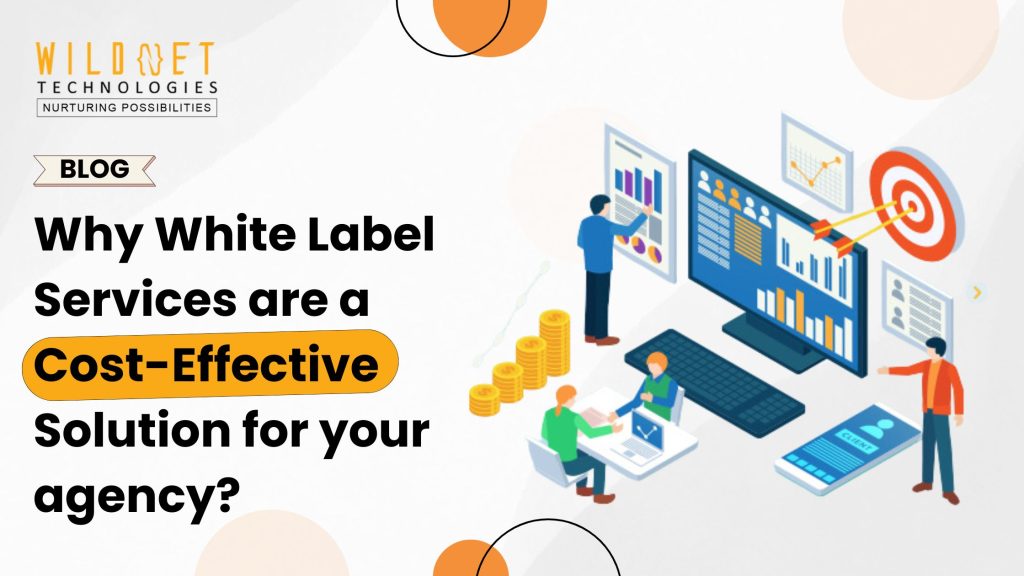If you’re looking up this question, it’s clear that you know how important the content is in building authority, trust, credibility, and potential customers.
But here’s the thing: you can’t just throw random blogs, videos, and social posts, and think it will work in your favor. And we assume that you understand that. So, you need a content strategy that’s basically a structured approach to creating, managing, and distributing content that truly serves your audience and achieves business goals.
When you learn how to create a winning content strategy, you are increasing your chances of getting better ROI and results. Without it, even great content can fall flat, lost in the noise, misaligned with audiences, or off-brand. This is why we’ve put down everything you need to know to create a content strategy that not just sounds fancy but is truly effective. So, let’s begin!
Step 1: Define Your Goals: The Foundation of Every Strategy
Before diving into content creation, ask:
- What do we want to accomplish?
- How will content support business growth?
Your goals should be aligned with business KPIs, like increasing brand awareness, boosting organic traffic, generating qualified leads, or converting customers. Set them using the SMART framework:
- Specific: Increase blog traffic by 30% in six months.
- Measurable: Track via analytics tools.
- Achievable: Based on past performance.
- Relevant: Tied to business objectives.
- Time‑bound: Defined by a clear deadline.
Step 2: Understand Your Audience: Personas & Pain Points
A smart content strategy centers on audience understanding. Use customer data, analytics, surveys, social insights to build audience personas. These personas should include:
- Demographics & roles
- Objectives & pain points
- Online behavior & content preferences
- Common questions & keyword language
When content speaks directly to audience needs and expectations, it’s far more effective.
Step 3: Audit Your Existing Content: Clean Up Before Scaling
If you’ve been creating content already, a content audit is essential. It helps you:
- Identify top-performing pieces to promote or repurpose
- Find outdated content to update
- Detect gaps to fill with new, relevant pieces
For each item, capture URL, publish date, performance metrics, and target keywords.
Then categorize content:
- Keep as-is
- Refresh & update
- Consolidate similar items
- Remove redundant/outdated pieces
Step 4: Keyword & Competitor Research: Fuel for Content Planning
Key to effective content planning is visibility. Leverage keyword tools to discover terms your audience searches for. Check out their volume, intent, competition because all matter. Focus on keywords that match your goals, audience needs, and domain authority.
Simultaneously, analyze your competitors. What topics do they cover well? Where are they falling short? This reveals gaps you can fill with content that stands out.
Step 5: Brainstorm Topics & Choose Formats Aligned to Goals
With brand goals, audience research, audit, and SEO insights at hand, generate content ideas rooted in value:
- Map each idea to a specific funnel stage (awareness, consideration, decision)
- Select the best format: long-form blog, cheat sheet, video, infographic, case study
- Plan for content repurposing e.g., turn a guide into a webinar or checklist
Example Mapping:
| Funnel Stage | Topic Idea | Format | Keyword |
| Awareness | “Content strategy basics” | Long-form blog + downloadable template | content strategy |
| Consideration | “Best editorial calendar tools” | Comparison article + checklist | editorial calendar |
| Decision | “How a digital marketing company handles content planning” | Case study | digital marketing company |
Step 6: Kickoff Content Planning: Organize the Process
Your next move: formalize content planning with tools and workflows:
- Tools & collaboration
Use digital tools like spreadsheets, shared docs, project management platforms, or dedicated content tools to coordinate teams.
- Editorial calendar
This becomes your central hub. Include:
- Publication dates
- Topic titles and formats
- Assigned authors
- Primary keywords
- Promotion channels
- Content type (blog, infographic, video)
A good editorial calendar supports both paid and organic campaigns.
With clear ownership and schedule in place, your content team, whether in-house or via a digital marketing company or external content marketing services can operate efficiently and cohesively.
Step 7: Build an Editorial Calendar: The Central Hub of Your Strategy
An editorial calendar is the beating heart of a content strategy. It’s where all the planning, scheduling, and collaboration happen. Whether you use a spreadsheet, a project tool, or a dedicated platform, the goal is consistent, organized publishing that supports your goals and brand messaging.
Core Components of a Strong Calendar
A powerful editorial calendar typically includes:
- Publish date – When content goes live
- Content type – Blog post, video, infographic, etc.
- Topic or title – Clear and compelling
- Target keywords/funnel stage – Awareness, consideration, decision
- Assigned author/editor – Responsibility and workflow
- Status – Idea, draft, review, published
- Promotion channel – Social, email, partnerships
- Goal or KPI – Views, leads, shares, conversions
Recommended Tools
- Simple tools: Google Sheets, Trello, Notion or Airtable for flexibility and accessibility
- Specialized tools: CoSchedule, StoryChief, ContentStudio, great for collaboration, scheduling, and analytics
Best Practices for Effective Calendars
Adopt these tips to maintain clarity and efficiency:
- Start with themes – Plan monthly or quarterly themes tied to goals and peak periods
- Balance content types – Rotate between deep-dive blogs, quick reads, visuals, videos to engage different audience segments
- Assign clear ownership – Know who’s responsible for each step whether it’s research, content creation, editing, or publishing.
- Stay flexible – Leave room for timely, reactive content—news, trends, or opportunities
- Track performance – Use the calendar to flag top content, measure against KPIs, and record improvements
Step 8: Create High-Quality, SEO-Optimized Content
Once your calendar is in place, it’s time to create content that connects with both humans and search engines.
Quality First = SEO Success
Google’s E‑E‑A‑T framework values Experience, Expertise, Authoritativeness, Trustworthiness. High-quality content needs to:
- Match user intent
- Add real insight, not fluff
- Be well-structured and thoroughly edited
Key Ingredients for SEO-Friendly Content
- Strategic keywords – Select one primary keyword plus a few related terms; integrate them naturally in headers and body
- Clear structure – Use H1 for title, H2/H3 for subheads; short paragraphs, bullet lists, visuals improve readability
- Engaging headlines – Keep under 60 characters, include emotional or power words, contain your keyword
- Multimedia – Images, charts, or videos break up text and boost engagement
- Internal & external links – Link to your own content and quality sources; external links signal depth and credibility
- Optimized metadata – Write compelling meta descriptions, alt tags, and title tags using keywords
- Mobile-friendly and fast – Ensure responsive design, quick loading for better ranking
- Regular updates – Refresh older posts to keep information current and search-relevant
Additional shortcuts: study top-ranking pages, use SERP tools (like Semrush or Backlinko) to reverse-engineer format and depth.
Step 9: Publish & Promote Strategically
Great content needs a promotion strategy to reach its audience.
Multi-Channel Promotion
- Social media: Share strategically on LinkedIn, X, Facebook with enticing previews and CTAs.
- Email newsletters: Highlight monthly or weekly content round-up.
- Blogger outreach: Send personalized notes asking for backlinks (supports your SEO services).
- Paid promotion: Use ads selectively to boost high-value assets like whitepapers or webinars.
Cohesive Campaign Integration
Link your content to broader marketing efforts:
- Launch themed campaigns (e.g., “July Content Strategy Series”)
- Coordinate content with product launches, events, or seasonal trends
- Encourage cross-promotion among team members and channels
Step 10: Link Building & Backlink Strategy
Authority signals from other sites strengthen your SEO:
- White-hat link building: Create share-worthy content that earns links naturally
- Guest blogging: Write insightful posts on relevant publications to attract visibility and links
- Resource pages & partnerships: Offer value and earn backlinks from curated industry lists
Remember: High-quality content plus outreach builds backlinks the right way. So, avoid shortcuts or gimmicks.
Step 11: Measure Performance: Track the Right KPIs
The most effective content strategy is data-driven. Measuring success is critical; as CMI emphasizes: establishing sound measurement practices from day one lets you continuously optimize your content’s performance.
Choose KPIs That Matter
Not every metric is vital. Select KPIs aligned with your goals:
- Awareness: organic traffic, impressions, reach
- Engagement: time-on-page, bounce rate, scroll depth, comments
- Lead Generation: form conversions, email signups
- Revenue: conversion rates, assisted conversions, customer lifetime value
Track both outcome-based (e.g., leads, revenue) and behavioral (e.g., engagement) KPIs.
Implement a Dashboard
Make good use of tools like Google Analytics, Search Console, and social analytics. Consider specialized dashboards (like ClearVoice or CoSchedule) to merge metrics with your editorial calendar.
Review Regularly
Schedule weekly and monthly reviews:
- Compare current performance against benchmarks.
- Identify trends like what’s soaring, what’s declining?
- Adjust your content planning and editorial calendar based on results.
Step 12: Iterate & Refine: Optimize for Results
Your content strategy should evolve in response to insights. CMI sample workflow:
- Pinpoint issues: High bounce rates? Low conversions?
- Experiment: Tweak headlines, CTAs, visuals.
- A/B Test: Measure impact before rolling out changes.
- Repurpose: Turn high-performing formats into other formats (e.g., webinars → blog posts).
Continual iteration maximizes ROI and improves efficiency, core principles behind any content marketing services team.
Step 13: Scale Effectively with Tools & Partnerships
After refining content, scale wisely:
Tools That Scale Workflows
- SEO Services tools: Use SEMrush, Ahrefs, Moz to identify new keywords and backlink opportunities
- Content planning platforms: Use Asana, CoSchedule, Trello for fierce collaboration
- AI-powered optimization: Tools like LinkScout or platform-integrated assistants enhance keyword picks, readability, and internal linking.
Leveraging Partnerships
As you grow, consider:
- A digital marketing company, like ours, to manage complex campaigns
- Specialized content marketing services focused on content creation, repurposing, or localization
- Freelance writers or designers to manage peaks in workload
These partners provide capacity and expertise without long-term hiring commitments, enabling agile scale.
Step 14: Optimize Content for AI Readability
As AI increasingly drives discovery, your content strategy must adapt to “Generative Engine Optimization” (GEO). It means structuring content to be easily understood and cited by AI platforms like ChatGPT, Claude, and Gemini.
Best Practices for AI-Friendly Content
- Clear structure: use H1 for headlines, H2/H3 for subheads, bullet lists, and tables.
- Concise language: short, digestible sentences and paragraphs
- Semantic keywords: include synonyms and related terms for AI context
- FAQ sections/schema markup: makes it easier for AI-driven search engines to identify content snippets
- Machine-readable formats: publish in formats like HTML or Markdown rather than PDFs
Optimized content improves visibility not just in search engines but also in AI-driven platforms and voice assistants.
Avoid Common Pitfalls
Awareness of pitfalls helps maintain momentum:
| Pitfall | Risk | Prevention Tip |
| Goal misalignment | Content doesn’t support business objectives | Tie every asset to SMART goals & KPIs |
| Audience neglect | Low engagement, wasted investment | Update personas regularly; survey and empathize |
| Ignoring SEO | Poor discoverability | Integrate SEO services early—keywords, links, metadata |
| Weak workflows | Delayed or inconsistent publishing | Use a robust editorial calendar with clear roles |
| Skipping measurement | No growth insights | Build analytics into every stage from day one |
| Over-dependence on AI | Robotic tone, factual errors | Use AI tools but always human-edit content for quality |
Final Thoughts & Next Steps
As you’ve gone through this blog on how to create a winning marketing strategy, use everything you’ve learned here and craft a content strategy that works for you. After you’re done with it, the next things you can do:
- Set regular cadences: Weekly planning, monthly check-ins, quarterly strategy reviews
- Build a resource library: Templates, style guides, and performance benchmarks
- Stay curious: Follow AI and content trends, like GEO, schema markup, and voice optimization
A winning content strategy isn’t static, it’s a living system informed by audience needs, SEO dynamics, and emerging technologies. With consistency and evolution, your content becomes a powerful tool for building trust, authority, and sustainable growth.
If you’re looking for the best content marketing services, Wildnet is the place to go. So, get in touch with us today.
FAQs
1. What exactly is a content strategy and why is it essential?
A content strategy is basically a structured plan for creating, managing, distributing, and measuring content that aligns with business goals. It ensures consistent brand messaging, saves time, and enhances ROI.
2. Why do I need a content strategy in the first place?
Without one, content becomes disorganized, misaligned, and ineffective. A strategy helps you connect with your audience, meet objectives, and stay focused.
3. How do I begin creating a content strategy from scratch?
Start with these foundational steps:
- Define clear goals and KPIs.
- Research your target audience (build personas).
- Audit existing content.
- Plan topics, formats, and distribution channels.
4. How can I build useful audience personas?
Use data from analytics, surveys, demographic info, and feedback. Personas should include roles, behaviors, pain points, preferred channels, and content interests.
5. What should I include in my editorial calendar?
Your calendar should outline publish dates, content types (blogs, videos, infographics), assigned authors, keywords, distribution channels, and performance goals.
6. How do I choose what topics and formats to create?
Match topics to user needs and funnel stages (awareness, consideration, decision). Select formats based on audience preference—blogs, videos, infographics, case studies, etc.
7. How important is SEO in content strategy?
Crucial. Incorporate relevant keywords, optimize metadata, structure content for readability, add internal/external links, and ensure mobile-friendliness to boost organic visibility.
8. What metrics should I track to measure success?
Track performance at each funnel stage:
- Awareness: traffic, impressions
- Engagement: time-on-page, bounce rate
- Conversion: form completions, lead volume
- Revenue: conversion rate, LTV
- Select KPIs aligned with your objectives.
9. How often should I update or review my strategy?
Set a regular review plan: audit content and assess metrics monthly, revisit goals and audience personas quarterly, and refresh the editorial calendar accordingly.
10. Should I manage all this in-house or hire a digital marketing company?
It depends on your resources. In-house gives control, but outsourcing to agencies or content marketing services offers scalability, specialist skills, and frees up internal resources.






